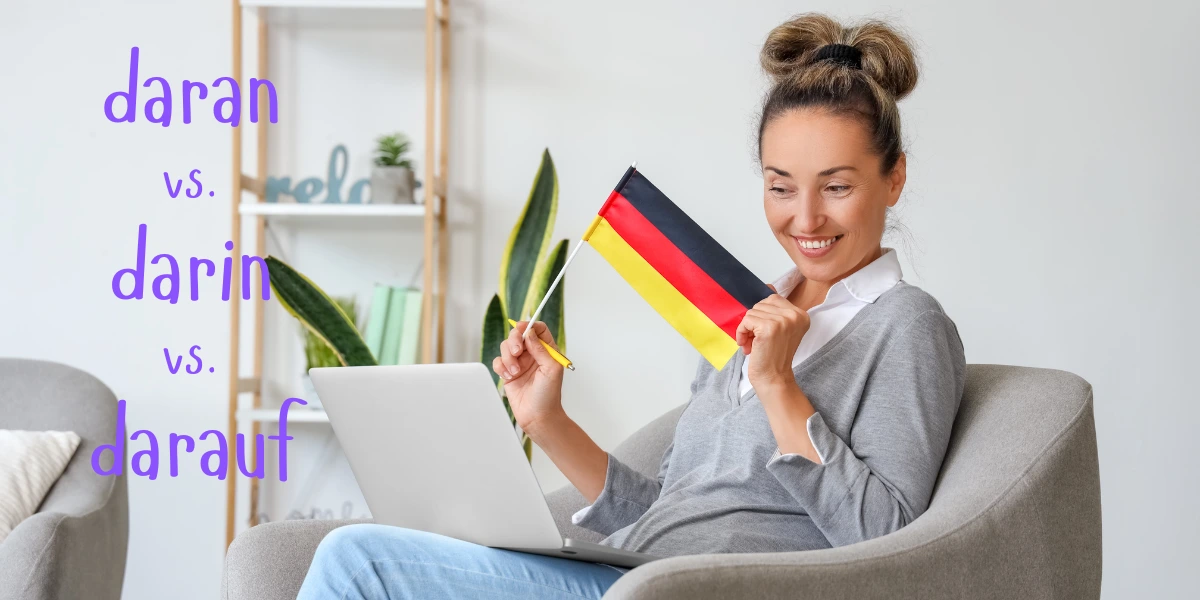We received another fascinating question about the German language:
What is the difference between daran, darin, and darauf?
Though this might seem like an advanced topic, don’t worry—we’ll break it down and make it easy to understand!
Whether you’re a seasoned German learner or just starting out, this explanation will help you get a clearer picture of these commonly used words. Let’s dive in! 📚📝
Explanation:
For example:
Instead of saying: Ich warte auf den Bus. Ich denke an den Bus. (I am waiting for the bus. I am thinking about the bus.)
Here, we used daran to avoid repeating the phrase den Bus.
That’s a really nice added value of words starting with da-.
For example: Er arbeitet daran. (He is working on it.)
Summary:
- Use daran for about it or on it.
- Use darin for in it.
- Use darauf for on it or to it.
Extra Examples:
- Er spricht daran. (He is talking about it.)
– Using daran for about it. - Was steht darauf? (What is on it?)
– Using darauf for on it. - Was ist darin? (What is in it?)
– Using darin for in it.
To reinforce what you’ve just read, check out our engaging video below! 🎥👇

